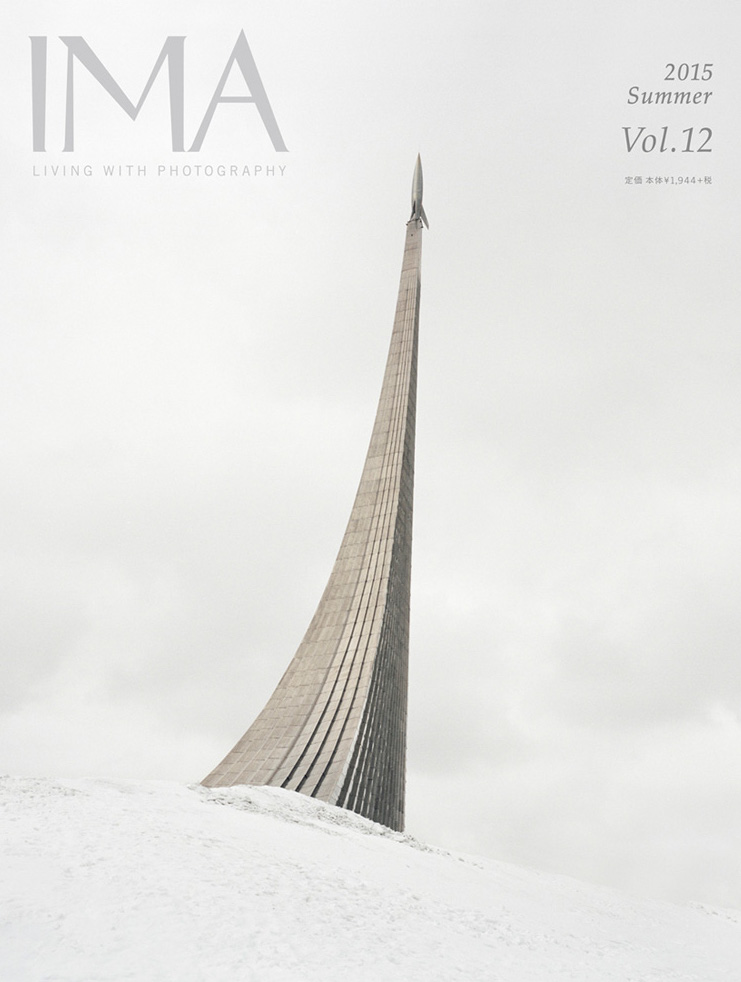Sticking to the Surface
IMA, Vol. 12, Summer 2015
Belarus is a landlocked country wedged between Poland and Russia. With less than ten million inhabitants and far more boisterous neighbours like Russia and the Ukraine, it receives little global attention. Even in Poland, little is known about this former Soviet republic beyond its exports of potatoes and tractors.
In late 2010, the Sputnik Photos collective, a group of central and Eastern European photographers who focus their work on this region, decided to each undertake a project on Belarus. Suffering from the effects of the global financial crisis and with an election approaching, this seemed like the right time to turn their attention to this often overlooked nation. One of the Sputnik collective members, the Polish photographer Rafal Milach, set out to Belarus with the intention to produce a personal, intimate project.
Despite his Belarusian origins he knew very little about the country before he started to work there, but he was struck by the Boards of Honour that appeared in public spaces, from the smallest villages to the largest cities. Generally awarded by local, regional, or national authorities, these attributions celebrate those “winners” that have made the most significant contributions to their community. While schemes such as this one are common in former Soviet countries, in Belarus they not only remain a highly visible feature of public life but also cover a surprising range of categories from best couple in love to best milkmaid, and from best ideology room to best public canteen. Soon after arriving Milach decided to make these Boards of Honour the focus of his project and, aided by a local journalist, he began to track down winners spread across the country.
Milach decided that he needed to employ a new photographic approach that was fundamentally different to his previous series. As he explained, “In my previous work I had always wanted to get as close to possible to the subjects I photographed, to understand or relate to them. In this case I didn’t want to relate to the person but to relate to the system.” In his early career, Milach worked for a daily paper for three months. He recalls that, “it was impossible to get beyond the surface of something. This experience came back to me with this project. The surface was the very thing I wanted to focus on in this case.”
Rafal Milach, The Winners
He decided to work as a “propaganda photographer,” simply photographing each winner rather than attempting to go deeper into their individual stories. Although the winners include objects and places, but mostly people, Milach refers to them all as “motifs,” illustrating the detachment that characterizes the series. Taken with a flash, the images resemble product pack shots, designed to make each “motif” stand out as much as possible. With this levelling process, even the human winners become objects. Under Milach’s direction they look away from the camera, often downwards, suppressing their individuality and expressing their subordination to the overall system.
After a chance encounter with the artist Oliver Chanarin in New York, Milach was put in touch with Gordon MacDonald, the publisher of London-based GOST Books. The two agreed to collaborate on turning The Winners project into a book. The book is deceptively simple. It seemingly contains only photographs with the text limited to the front and back covers. However, the central design device of the book is that all of the images are tipped in, concealing an additional layer of information beneath each image. Milach recalls that the idea came from a discussion with Ania Nalecka who designs all of his books: “We wanted to confuse the viewer when they first pick up the book, just as propaganda creates confusion. Without any text you cannot really understand what is going on with this collection of motifs.”
Despite an extremely complicated production lasting over six months, the book ended up on many of the best photobooks of 2014 lists and was shortlisted for the Paris Photo – Aperture Photobook Award for Book of the Year. According to Milach, “It wasn’t easy, but it was absolutely worth it.”
Although the project has been shown widely since the book was published in 2014, it has yet to be officially presented in Belarus itself. However, in October of this year Milach will present the project in the context of the Month of Photography in Minsk. He told me that he is excited to finally be presenting the project there: “It could be a difficult experience, but I will try not to take the position of someone who is explaining or justifying themselves. I want to make it understandable and approachable from the other side. It might be possible or it might not. We shall see.”
By Marc Feustel

